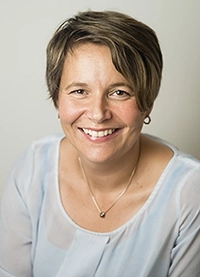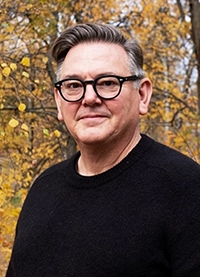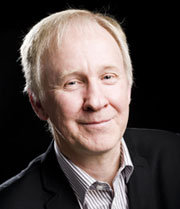With the common goal of developing an emission-free pulping process on an industrial scale, Swedish RISE and Finnish VTT have started a joint research program, "Emission Free Pulping", which will initially last for five years.
In this interview, Alina Ruonala-Lindgren, Coordinator, VTT, and Per Tomani, Scientific lead RISE, talk about the structure and purpose, but also about what is further needed.
- One of the most important things is that the program is open so that new partners can join as the project progresses, Alina Ruonala-Lindgren begins. The initiative comes from the forest industry and two years ago we started preparing the program. The main driving forces were the forest industry's thoughts about the future availability and cost of wood and how to use the wood raw material in the best and most efficient way. In the current chemical pulp processes, the yield is about 50%, while 50% is burned in black liquor. In addition, it is perhaps more likely that, for example, protected areas in the forests will hardly become smaller in the future, which affects the availability of wood supply.
 |
''One of the most important things is that this is an open program so new partners can also join as the project progresses'' , says Alina Ruonala-Lindgren. |
- Today, fossil-based CO2 emissions are regulated, but in political discussions, not least within the EU, there is also talk about emissions of biogenic CO2. From a natural point of view, does it matter where the CO2 comes from? The industry wants to use the raw material more efficiently with higher carbon efficiency (less CO2 emissions) and develop and produce new products that contribute to more revenue. Another factor with increasing importance is the use of water in the processes. Climate change is causing summers to become drier so in the pulp and paper industry there may be more to do to reduce water use.
- In the discussions about and before the project, it was concluded that these major problems cannot be solved by one or two companies or by one or two research organizations. It therefore became clear that different research organisations, i.e. universities and institutes, as well as companies need to work together. Not just from Finland or Sweden, but to think more broadly than that.
- The industry also identified the lack of programs or initiatives with the aim of scientifically building up basic knowledge to find ways forward related to these “future” challenges, says Per Tomani. But also to look with new eyes at what was previously published. It may be of interest even if the landscape has changed a lot.
Does the project aim to make the kraft process emission-free?
- We want to be a little more open than that and focus on the potential to create tomorrow's pulp production processes, which of course should be emission-free and have increased total product yield, continues Per Tomani. This may apply to the fibre yield but may also concern products based on the other wood components as well as combinations. There are great opportunities to develop and produce even more such products. We want to challenge the current chemistry and unit operations. There have been many things done back in the days that are very valuable and perhaps relevant to emission free pulping, but we also want to use and develop new tools and ideas from researchers to see what is possible to achieve now. Incremental fine-tuning of the kraft pulping process is not our focus, although we hope that the results from our work will be of great value to the development of today's processes. The program will cover all process steps from wood, via fibre liberation to products out.
 |
''We want to be open and have focus on opportunities to form tomorrow's pulping processes, which of course should be emission-free and have increased total product yield'' , emphasizes Per Tomani. |
- It is clear that combustion processes are something we need to avoid and we want to find other solutions, emphasizes Alina Ruonala-Lindgren. It is about how the fibres are separated with minimal energy and that as little of the feedstock as possible is burned, which means that all process parts must be studied. Some very energy intensive unit operation of the current pulp processes may not be as needed in the future as they are today. The program does not include carbon capture and storage as there are several ongoing research activities in this area. We focus specifically on researching opportunities for future pulping processes related to the challenges the industry has identified. We have searched but found no similar program like this, so it is truly one of a kind.
- The program is for at least five years and all partners commit to five years. The target budget is 15 million euros and so far we have received funding from Business Finland, and what we have secured in Finland is over 5 million euros plus corporate funding. To have a balanced arrangement, funds from Sweden are also needed as the area is also very important for Sweden and the Swedish economy.
Initially, the goal was set to have about twenty researchers in the program, but with current funding, the aim is for about thirty full-time researchers. Recruitment of researchers is ongoing and is also sought globally. The reason for the time span of five years for the program is to give enough time for the PhD students and while others are postdoc researchers to complete their work.
Per Tomani says that they have about thirty different research proposals/tasks and that the main part of them can be started as soon as funding is resolved. Right now, there is funding secured for about seventeen of them through Business Finland and other Finnish contributors. The program team is working on attracting more companies to join, which is needed before a co-project can be submitted.
At this stage of Emission Free Pulping, the milestones have not yet been defined. One reason is that new analytical tools will be used to see if we can find new approach on how the fibres can be separated with as little energy use as possible. Indications on what the new tools can provide is expected to be clarified relatively early in the project and until then no fixed milestones are set for when different results need to be achieved.
 The question of future availability and cost of wood and how the wood raw material should be used in the best and most efficient way are important questions for the forest industry.
The question of future availability and cost of wood and how the wood raw material should be used in the best and most efficient way are important questions for the forest industry.
Should Emission Free Pulping be seen as a start-up program and that more will come?
- We see it as creating a common platform with research organisation in Sweden and Finland as well as companies active on the international arena for future wood fibre production, with basic research and scientific discussions as tools for these achievements, says Per Tomani. It takes time for processes to go from lab to full scale and not all challenges can be solved in five years. The program will either be followed by others, or we can continue this one. We continue to keep the door open to new participants who want to commit for five years on the same terms as the existing Emission Free Pulping partners. This means in practise that we can continue the program even after the first five years, provided we add on partners. Emission Free Pulping is important not only for large companies but also for smaller ones to stay competitive.
- In this program, the companies can collaborate on this important issue of the future. We have agreed on the Antitrust policy which we follow and all the results are being published as scientific articles, Alina Ruonala-Lindgren points out. The coordination happens to come from Finland and Sweden, but it is an international program and we already have a partner from Chile. This is truly a global platform. We made a rough calculation that if we manage to convert approx. 75% of the wood, instead of the current approx. 50%, into products in the pulp processes in the future, and that the pulp industry is still self-sufficient in energy, then half of today's around 400 million tons CO2 emissions from pulp production disappear. In addition, significant additional income is created for the companies at the same time. So, the effect will be really big if we succeed.
- In this collaboration between companies and researchers, the companies will steer the development and ensure that it is relevant and interesting to them. Even though we are talking about basic research, we are most interested in the industrial application, and we are thinking ahead about the processes and how it should be in real industry. Results should not be just scientific articles, Alina Ruonala-Lindgren and Per Tomani conclude.
Facts Emission Free Pulping
Aim: Emission free pulping at industrial scale
- Maximize product yield, avoid emissions, especially CO2.
- Fibre qualities suitable for high volume applications.
- Efficient utilization of side-streams, preferable for other use than energy.
- Sustainable energy efficiency and mill self-sufficiency to be considered.
- Sustainable water management.
- Overall sustainability impact and realistic industrialization critical.
Partners: Aalto University, Andritz, Arauco, Chalmers, University of Helsinki, KTH, LUT University, Metsä Group, Mid-University, RISE, Stora Enso, University, UPM, Valmet, VTT and Åbo Akademi.
For more information: www.emissionfreepulping.com.
 Sören Back has been working in the Swedish pulp and paper industry since 1976. With an M.Sc. in chemistry with focus on in pulp and paper technology the career spans from production control, product development, sales and marketing to communications, including PR, primarily in managerial positions. Over the years Sören has worked for MoDo Paper, M-real, now Metsä Board, and SP Processum but is now running his own business, SB Kommunikation AB, as freelance writer and communications consultant with customers mainly within the pulp and paper industry.
Sören Back has been working in the Swedish pulp and paper industry since 1976. With an M.Sc. in chemistry with focus on in pulp and paper technology the career spans from production control, product development, sales and marketing to communications, including PR, primarily in managerial positions. Over the years Sören has worked for MoDo Paper, M-real, now Metsä Board, and SP Processum but is now running his own business, SB Kommunikation AB, as freelance writer and communications consultant with customers mainly within the pulp and paper industry.













